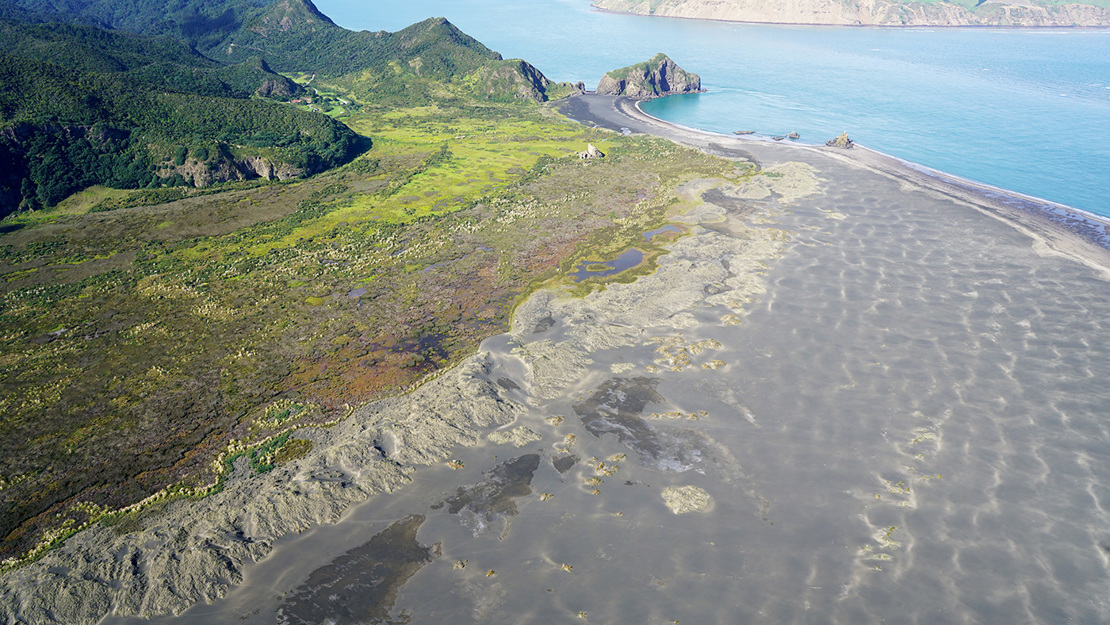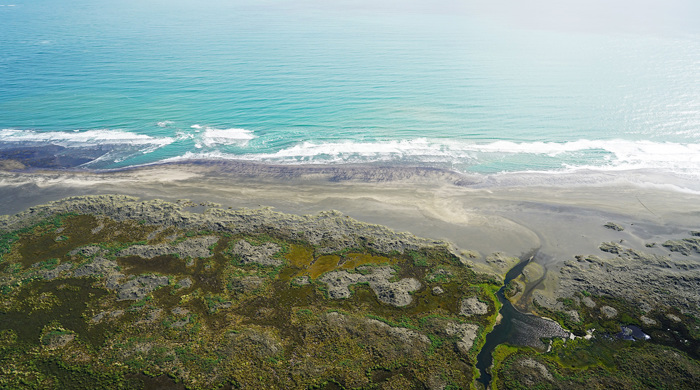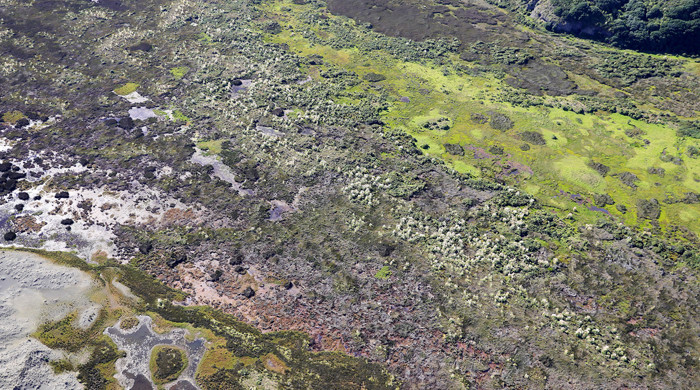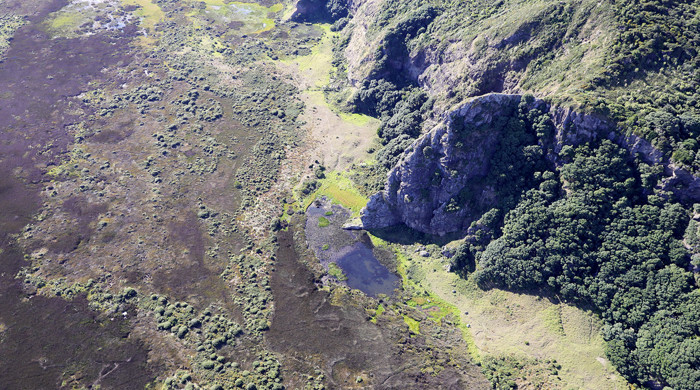Whatipū
Size: 742 hectares
Site description
The Whatipū biodiversity focus area covers an extensive area of sand dunes on Tāmaki Makaurau / Auckland’s west coast, extending from Karekare Point south to Whatipū.
Since the 1930s, the high tide mark has extended nearly 2km west of its original position at the base of the cliffs due to sand accretion (accumulation). These accreted dunes are unique in Tāmaki Makaurau / Auckland and are a landform of national significance.
The area was officially made a Scientific Reserve in 2002 and is now dedicated to scientific study, research and education for the benefit of the country.
The area is buffered by the marine environment on one side and on the other transitions into the native forest clad Waitākere Ranges. The forest and dunes combined are an extensive and diverse area of intact native habitat. It is a remote wilderness area of extremely high biodiversity value.

Key ecosystems
The ecosystem values of Whatipū include:
- Extensive areas of spinifex and pīngao dominated vegetation (DN2) on the active dunes, closest to the sea where there is an abundant supply of wind-blown sand.
- Oioi, knobby clubrush sedgeland and herbfields (DN5) on the dune plains inland of the active dunes.
- Wetland vegetation surrounding a series of permanent and ephemeral dune lakes. Wetland ecosystems include large areas of Machaerina sedgeland (WL11) with abundant kuta and jointed twig rush, raupō reedland (WL19), and occasional patches of flaxland (WL18).
- Small patches of native treeland scattered along the base of the cliffs.


Habitat values
The dunes, associated lakes and wetlands provide significant habitat for wildlife. Native bird species include:
- matuku hūrepo (Australasian bittern)
- mātātā (fernbird)
- taranui (Caspian tern)
- pīhoihoi (pipit)
- koitareke (marsh crake)
- weweia (dabchick)
- tara (white-fronted tern)
- tūturiwhatu (New Zealand dotterel)
- pohowera (banded dotterel)
- tōrea pango (variable oystercatcher)
- poaka (pied stilt).




